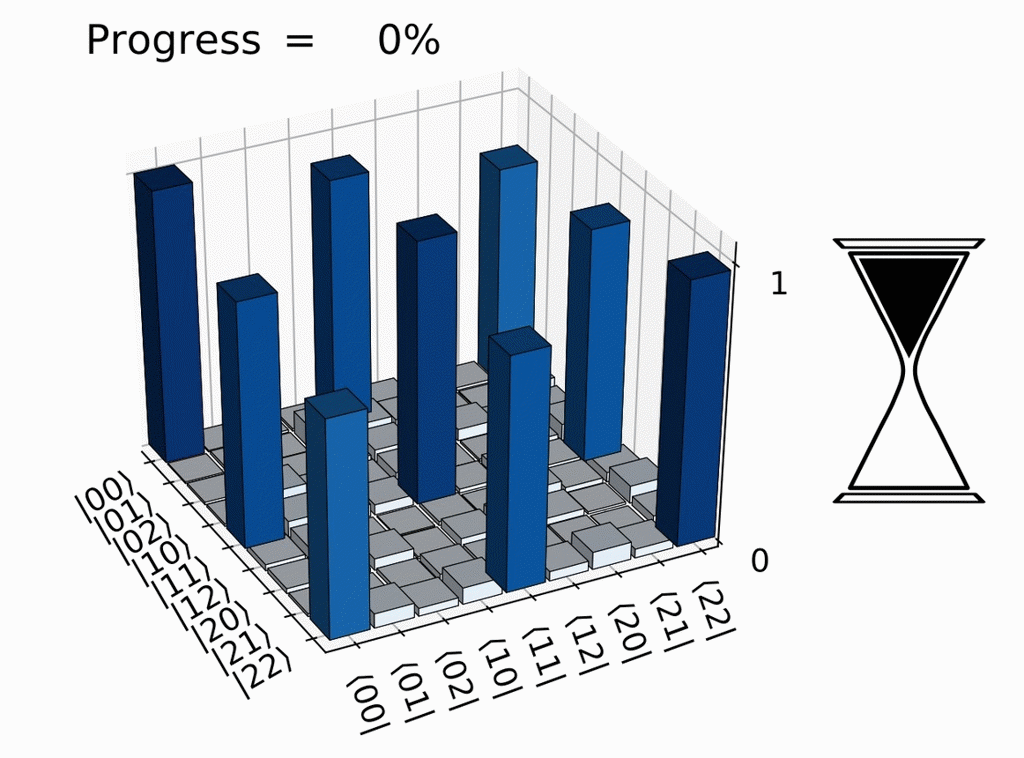![]()
A multi-institution European team used an RF trap to capture a strontium ion and track the evolution of quantum superposition during an “ideal” quantum measurement. [Image: F. Pokorny et al.]
One of the truisms of quantum mechanics is that measuring a quantum system will change it. But how does it such a measurement proceed in time—and, even as a measurement destroys some quantum superpositions, can others be preserved?
A team of scientists in Sweden, Spain and Germany has now provided some insight, by “filming” a quantum measurement in progress (Phys. Rev. Lett., doi: 10.1103/PhysRevLett.124.080401). The work both sheds light on the nature of quantum measurement, and could offer insights useful in further development of trapped-ion-based quantum computers.
Getting real with “ideal” quantum measurements
A key aspect of the “weirdness” of quantum mechanics is that a quantum system, such as an electron, can exist in multiple quantum states at the same time—or, more precisely, that the state at any given moment constitutes a superposition of multiple wave functions describing possible solutions. A measurement causes the wave function to “collapse” into a single solution.
In his 1932 work Mathematical Foundations of Quantum Mechanics, John Von Neumann held that an “ideal” measurement of a quantum system would destroy all quantum superpositions in the system. But in a 1950 paper, the German physicist Gerhard Lüders argued that this wasn’t quite correct. In the interpretation generally accepted by physicists today, Lüders held that superpositions involving so-called degenerate eigenstates (characteristic states) not involved with the measurement could survive it. Thus some quantum coherence could be preserved across a sequence of such ideal quantum measurements.
Stating the theory is one thing; finding such ideal measurement processes in nature is another. That’s because in practice, as the authors of the new study write, “a measurement is often a rather violent process that ‘destroys’ the quantum system, for example, the detection of a photon.” How do the dynamics of an ideal quantum measurement actually play out in such a seemingly instantaneous process?
Tracking ideal-measurement dynamics
To find out, the research team designed an experiment to track the evolution of a natural “Lüders process”: measurements of fluorescence of an 88Sr+ ion, confined in an RF trap (a linear Paul trap). Specifically, the researchers looked at the coupling of the trapped ion to the environment of the emitted fluorescent photon.
[View animation] An animated bar chart shows the evolution of quantum superposition during a fluorescence measurement, for a trapped “qutrit” ion. Coherences between the state tied to the fluorescence measurement, |0⟩, and one of two other states, |1⟩ and |2⟩, decay over a finite time, while coherences between |1⟩ and |2⟩ (that is, the bars for |11⟩⟨22| and |22⟩⟨11|) are preserved. (The three other bars reflect the autocorrelation of each of the three initial states with itself.) [Image: F. Pokorny et al.]
After confining the ion in the trap, the researchers used a combination of magnetic fields and a 674-nm laser to tickle the ion into a so-called qutrit—a superposition of three electronic states, |0⟩, |1⟩ and |2⟩. Next, they used a 422-nm laser to drive the transition of one of those states, |0⟩, to a short-lived excited level, |e⟩, which would emit a photon into the environment upon relaxation. Employing an approach known as quantum process tomography, the team took “snapshots” of the nine possible superposed states involving |0⟩, |1⟩ and |2⟩, to see how they evolved during the course of the fluorescence detection.
In principle, because only |0⟩ participates in the fluorescence process, the coherences between |1⟩ and |2⟩ should be unaffected by the measurement, while coherences involving |0⟩ and |1⟩ or |0⟩ and |2⟩ should decay across a non-instantaneous but still very brief (microsecond-scale) time. The experiments showed precisely that pattern, as the researchers demonstrated in an animated bar chart.
Theoretical and practical relevance
In a press release accompanying the research, one of the corresponding authors, Markus Hennrich of Stockholm University, said that the results “shed new light onto the inner workings of nature and are consistent with the predictions of modern quantum physics.” But the researchers also believe that the results could have practical relevance in the realm of quantum computing. That’s because a key type of quantum computer under development involves the measurement of quantum information, via fluorescence detection, from trapped ions—precisely the situation studied in the new work.
In addition to researchers at Stockholm University, the team included members from the University of Seville and the University of the Basque Country, Spain, and the University of Siegen, Germany.

